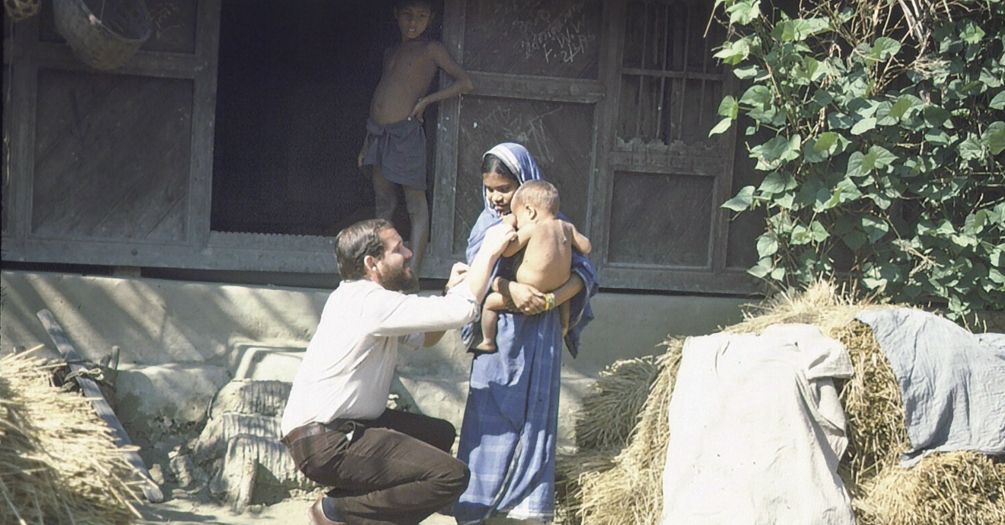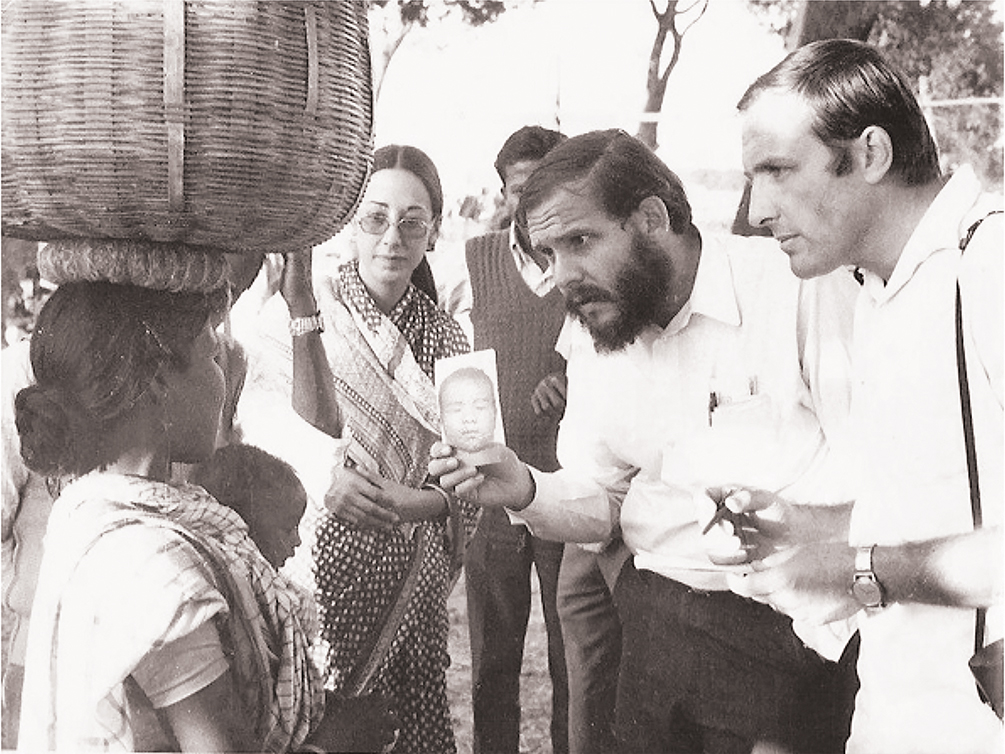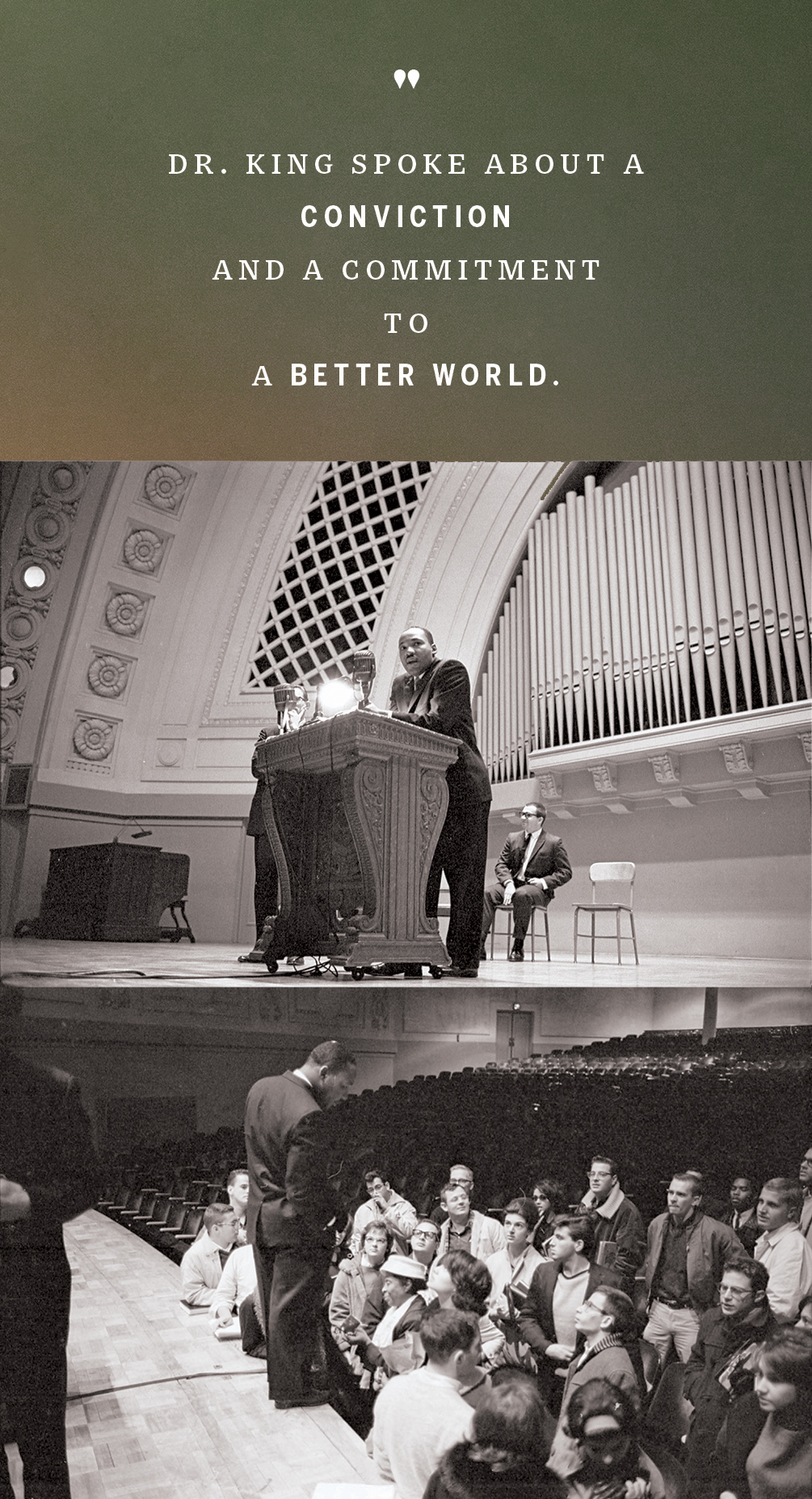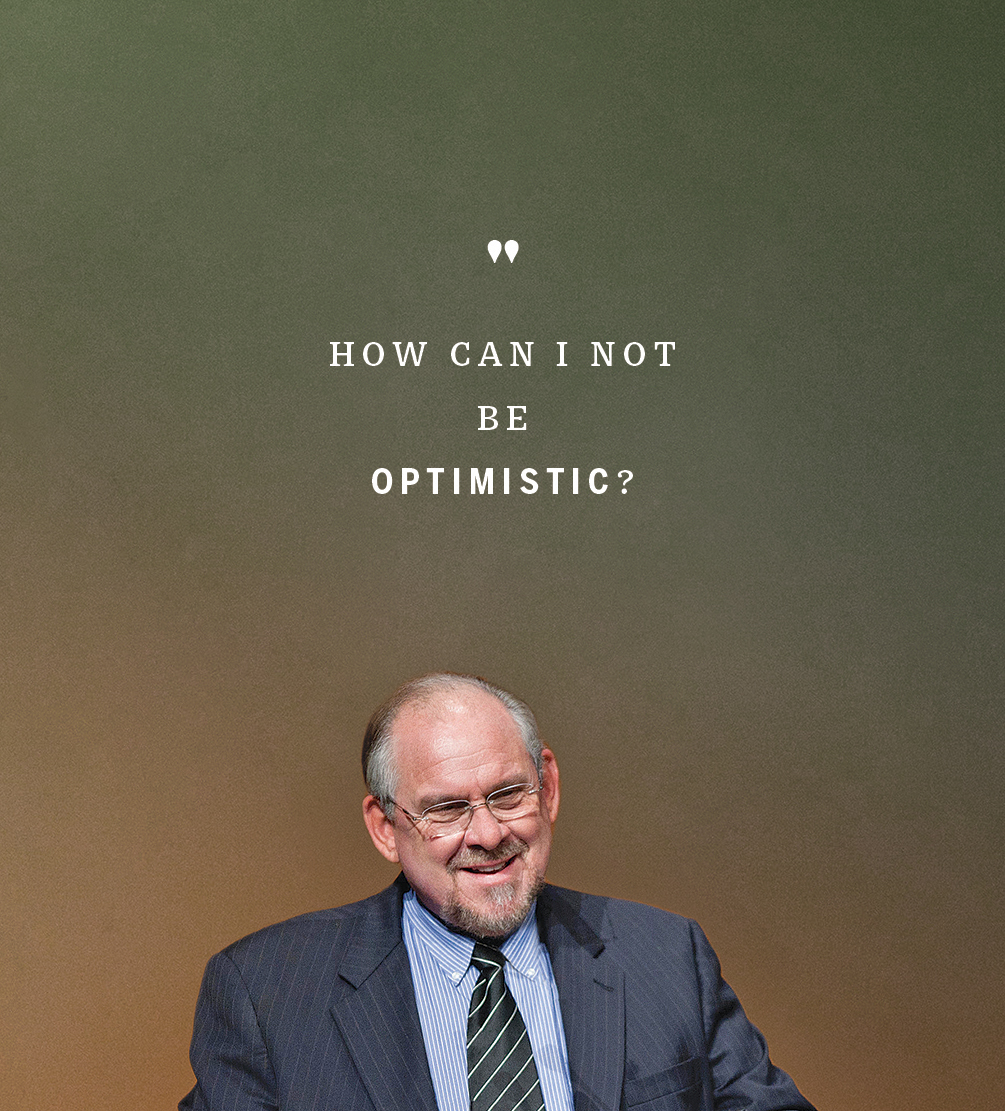Larry Brilliant: A lifelong pursuit of public health, ‘the most rewarding field in the world’

Dr. Larry Brilliant, MPH ’77, arrived at the University of Michigan School of Public Health in the 1970s with perhaps the most impressive résumé for a prospective student. He and his wife, Girija, had just returned from India after helping eradicate smallpox, one of the most devastating diseases in human history.
Of course, the physician and medical epidemiologist has gone on to have a world-class career in public health and in the technology industry. He currently serves as the CEO for Pandefense Advisory, senior counselor at the Skoll Foundation and as a CNN medical analyst. He also has served as chair of the Advisory Board of the NGO Ending Pandemics and the founding executive director of Google.org., Google’s charitable arm.
Earlier in his career, Brilliant was an associate professor of epidemiology and international health planning at Michigan Public Health. For 10 years, he lived in India, where he was a key member of the World Health Organization Smallpox Eradication Program for Southeast Asia as well as the World Health Organization Polio Eradication Program. Brilliant was named one of the 100 Most Influential People by Time magazine in 2008. His memoir, “Sometimes Brilliant,” was published in 2016. He also donated the World Health Organization India smallpox campaign archive to the University of Michigan’s Bentley Historical Library.
He recently sat down with Michigan Public Health Dean F. DuBois Bowman for the school’s “Ahead of the Curve” leadership speaker series. The following excerpts, edited for clarity and brevity, are from that conversation.
On meeting Dr. Martin Luther King Jr. on Nov. 5, 1962, on the University of Michigan campus:
There was a little note in the Michigan Daily that Dr. King was going to be on campus and speak at Hill Auditorium and the weather was just godawful thanks to a snowstorm that hit Ann Arbor. We wound up going in to see Dr. King in a cavernous hall that would hold 3,000, and there weren’t more than 50 people there.
Harlan Hatcher, who was the president, was really embarrassed when he introduced Dr. King to an empty room. Dr. King got up, started laughing and said, “Look, there’ll be more of me to go around. Y’all come on up here on stage with me.” We all went up on that parquet floor and sat around Dr. King—I’d never heard anybody speak like he did.
He spoke about a conviction and a commitment to a better world. It wasn’t just that there might be a better world—it might be that it would be done by much struggle—but that there was room in that struggle for everybody; everybody who was sitting around him; everybody in Ann Arbor. And then he said, “The arc of the moral universe bends towards justice, but it ain’t going to bend towards justice on its own, you’ve got to get off your ass and jump out of your chair and leap up and grab that arc and bend it and twist it towards justice.” And he had me—he had all of us—every single person who was on that stage went down to Birmingham that summer or marched with him at some point.
On the devastation of smallpox:
It’s hard to tell what virus is the worst in history, but certainly smallpox is a contender for that terrible title. In the 20th century alone, from 1900 to 1980—when WHO declared it eradicated—500 million people died of smallpox, and they were mostly little kids. Smallpox killed one out of three people and there was no cure for it. I’m happy that most of the people today were not born when it still was in existence and never had to experience it.
On eliminating smallpox through vaccination:
Going all the way back to the Middle Ages—even before we had a vaccine—we had variolation, a process of taking the scabs of a child with smallpox and pulverizing them. Then, the powder would be blown through an ostrich leg bone into somebody’s nose. That process, which occurred in Pakistan, Afghanistan, India, China and probably in some parts of Latin America, was called variolation. Variola is the name for smallpox. It provided immunity but it killed one out of 10, so you’re trading the risk for a high death rate. It was an unacceptable practice until Edward Jenner discovered that cowpox would give lifelong protection against smallpox.
Jenner concluded that if he could take pus either from the udder of the cow or the finger of a milkmaid, that he could transfer that to a young boy named James Phipps, and that boy was the first boy who was protected against smallpox by cowpox. The Latin name for cow is vacca, and so that process became known as vaccination.
On what he learned from working with public health leaders to eradicate smallpox:
Bill Foege, for those who don’t know, was the head of the CDC at that time. He is the most charismatic person I have met in the field of public health, and it was Bill who found the strategy that worked to eradicate smallpox. Bill was working as a medical director at a church being used as a hospital in Nigeria during the Igbo Civil War—and he was allotted a small amount of smallpox vaccine. There was a horrific outbreak, and he knew that he didn’t have enough vaccine to vaccinate everybody.
Bill said his moral duty was to allocate the vaccine first and foremost to those most vulnerable to contracting the disease. And who were they? They were the people who lived in the same household or were neighbors of a case of smallpox. He did that and the smallpox disappeared in his hospital area. He came to believe that selective epidemiological control, which later was named ring vaccination, was the key to eradicating smallpox. Bill published a seminal article in the Journal of Epidemiology in 1969 or 1970 that allowed WHO and DA Henderson, the wonderful leader of the smallpox program in Geneva, to change course.
Instead of vaccinating everyone, we first had to find every single case of smallpox in the four countries that remained with the disease: India, Bangladesh, Pakistan and Nepal. Of course, to do that we had to go house-to-house, we had to have reward posters and we had to go to marketplaces. All throughout India our team of 150,000 people made 2 billion house calls, and we found every case of smallpox, and vaccinated a ring of immunity around it and that was the strategy that led to the eradication of smallpox. By the way, we tried using that strategy during COVID, but as you know, we really couldn’t get many people to cooperate with contact tracing in the United States. It’s the same principle: Find every case, find the most vulnerable; allocate your resources in an equitable fashion and equity turns out to be the best epidemiology.
On witnessing the very last case of smallpox:
The last case of smallpox, the one that matters the most to me, was the last case of Variola major in nature because that’s the one that stretches all the way back to Pharaoh Ramesses V, an unbroken chain of transmission over those thousands of years. There was a little girl named Rahima Banu and she lived in a village called Kuralia on Bhola Island in Bangladesh. When we had finished eradicating smallpox in India, Nepal and Pakistan, and Bangladesh alone was infected, we got a call.
I was working at the regional office called SEARO, the South-East Asia Regional Office, and we got a call that they thought that they had found the last case. I was asked to lead a team to do a search of a 30-mile radius around that case and see if we can find more, but we didn’t find any more cases. I was face-to-face with this little girl who was the last case of smallpox in the world, and I thought that as her scabs had fallen on the ground and the virus was killed by the sun and she breathed out the last virus, she recovered. As those viruses died, that was the end of history; that was the end of all the stories about smallpox and all the number of billions of people perhaps who had been killed by it. I just cried like a baby. That’s when public health is good.

On the US response to the COVID-19 pandemic:
One always wants to see the best, but I would say that our response to COVID was shameful. There’s hardly any country in the world that could take great pride in the response that they had to COVID. Once there was a vaccine, the US gobbled up a disproportionate amount of the vaccine doses and the wealthy world put advanced purchase agreements in place, locking up the supply. Countries like South Africa didn’t get any vaccine and those things that were helpful to prevent the spread of COVID prior didn’t work very well once the virus began to mutate—it became more transmissible. And I to this day think that the failure of companies like Moderna to allow proximate manufacture of their vaccine in Africa was one of the factors that has led to the creation of new variants—certainly Omicron—with all its mutations. We have to be really careful. I think the Trump Administration did awful, but I don’t think the Biden Administration’s rollout has been stellar.
I think Andy Slavitt did a great job in the rollout, but the disinformation, misinformation and missteps of my beloved CDC has been a big disappointment. I think there’s a lot of credit that goes to the individual workers in the field, but I think at a national level, when the final reports are made, we could have done so much better. We missed so many opportunities and so that’s something that brings me great sadness. I don’t like to say that publicly because the field of public health is already becoming downtrodden. We’ve taken all the flack and there’s a lot of anger and misunderstanding of public health. I think we in public health did really well, but the politicians did terribly. It’s not just Republican or Democrat, right-wing or left-wing; almost all of them did terribly.

On why communications are so important to the field of public health:
This brings us back to Bill Foege and these nine lessons from smallpox eradication. The No. 1 lesson is that with public trust, public health can do anything. Without public trust, public health can’t do almost anything, and we squandered public trust. Politician after politician failed to allow transparency and honest communications. If you don’t tell the truth, it may be a short-term winning strategy, but it’s a terrible long-term strategy. It’s morally corrosive. You bankrupt the bank in which trust is stored and once it’s gone, it’s very difficult to restore it. And that’s one of the lessons from smallpox eradication. Radical transparency, honest numbers, full reporting and especially the mistakes that you make. Say them first, be honest about them, and with humility.
On the value of a lifelong pursuit of public health:
The happiest people in the world are the people who’ve worked for others, sacrificed themselves, worked in public health—and it’s often thankless—but they know; we know what you’ve done. It’s the most rewarding field in the world. And if your goal is to be happy and to feel at the end of time that you’ve done as good a job with this life that you’ve inherited, you can’t go wrong with public health.
On what keeps him optimistic about the future:
I’ve met Martin Luther King and I’ve seen the last case of smallpox and I had a guru in the Himalayas who predicted that smallpox would be eradicated. Those are all impossible things for a kid from Detroit, Michigan, so how can I not be optimistic?

